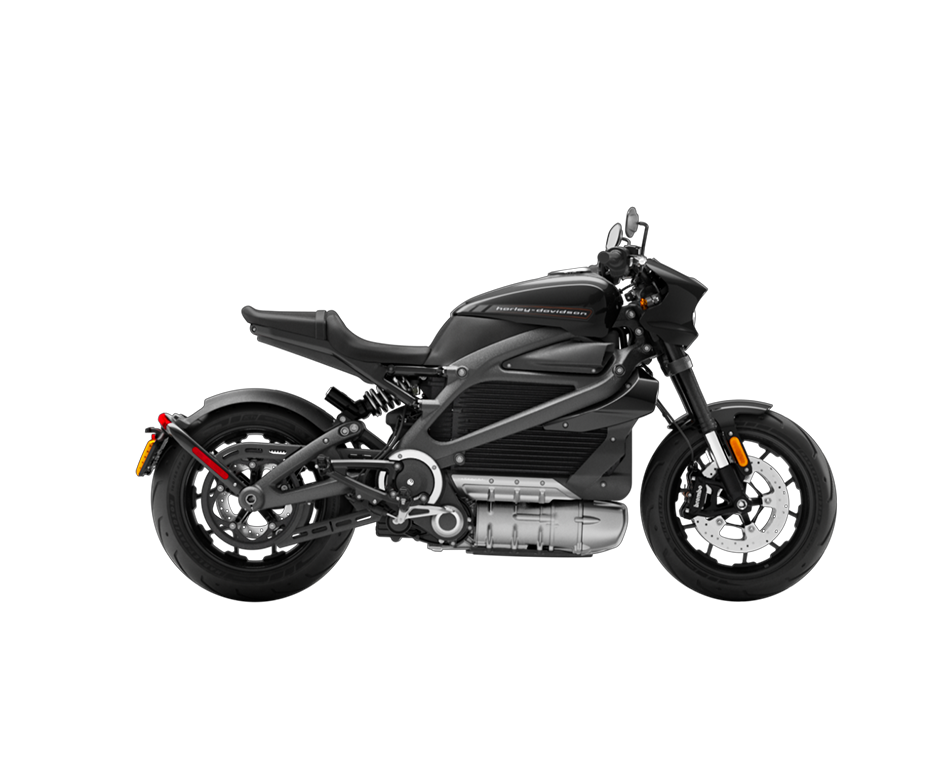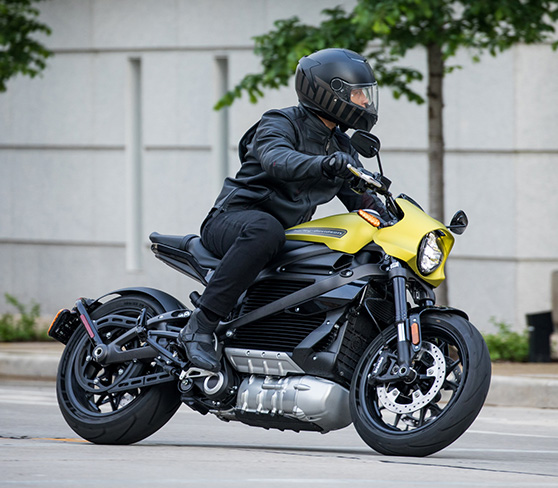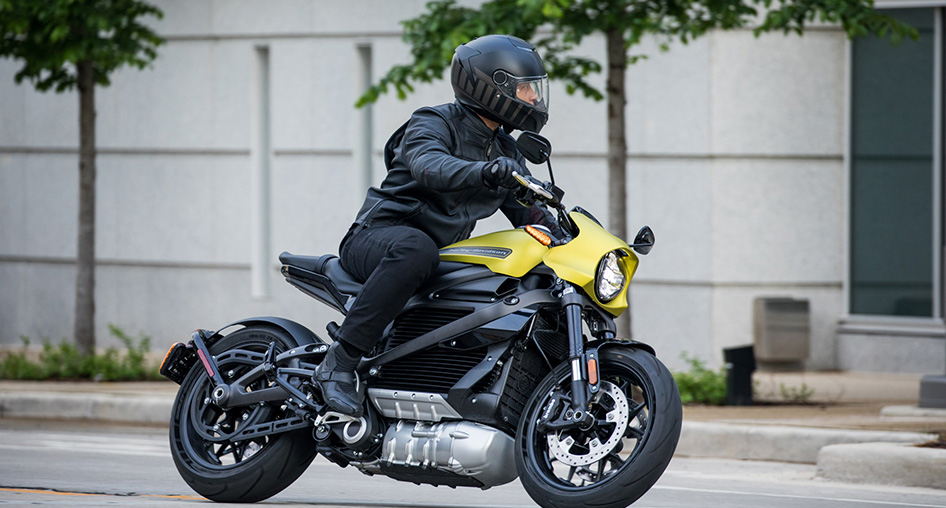



Well before that happens, non-electric vehicles will have been banned from the centers of major cities in Europe and elsewhere. But transportation isn't just getting from Point A to Point B—it’s about all the experiences in-between. From public transit, to ridesharing, to personal ownership, and more participation models, electric two-wheeled vehicles will play a key role in bridging the divide between where you are, where you want to go, and, most importantly, how you want to feel along the way.
Harley-Davidson® will continue to propel the performance of two wheels into the future through innovation and exploration, as it has done for the last 116 years, attracting the next generation of riders from around the world. Or, as Matt Levatich, President and CEO of Harley-Davidson says, "we will lead the next revolution of two-wheeled freedom to inspire future riders who have yet to even think about the thrill of riding."
Planning for that future started in earnest in 2010, when the company started working on its first electric motorcycle concepts, and the technology it would need to make them a reality. Four years later, the world got its first look at the results, with the unveiling of Project LiveWire™. Harley-Davidson took that prototype on the road to engage with motorcyclists around the country.

Since its initial conceptualization, LiveWire™ has evolved to deliver a truly premier riding experience with the latest in connected riding technology and top tier performance. It’s the next generation motorcycling brought to life. A key feature of LiveWire™ is that it will a highly connected motorcycle experience with the H-D™ Connect service.
LiveWire™ is equipped with an onboard LTE telematics control unit that speaks to the H-D Connect cloud allowing owners to communicate with their electric bike even when it's not around. (Of course, both LiveWire™ and your phone must have a cell signal for this to work.) This new level of connectivity for a motorcycle enables a number of features for the LiveWire™ rider that provide a highly personal connection with the bike.
From the H-D Connect service, you can instantly connect to LiveWire™ and check the battery's state of charge and the estimated range available. Or, if it's charging, H-D Connect will inform you how many miles its added since being plugged in, and how soon you can expect it to be topped up. H-D Connect will even let you find charging stations, either nearby or on your route.
With H-D Connect keeping them in touch with the bike from wherever they are, LiveWire™ riders will have heretofore unknown peace of mind when it comes to their motorcycles. And that goes beyond just knowing how much juice is left in the battery. If the electric bike's onboard systems realize it's time for a service or some other form of vehicle care, H-D Connect will provide them with the appropriate notification.
Finally, should the worst happen while LiveWire™ is parked somewhere, H-D Connect will let the rider know. Alerts will be sent if the bike is bumped or tampered with. And should LiveWire™ be moved without permission, the onboard GPS system will continue to track it.
"Harley-Davidson is taking the lead in the electrification of motorcycles, and we're excited to be working with Panasonic Automotive to make that a reality," said Marc McAllister, Vice President Product Planning and Portfolio, Harley-Davidson. "Their team has the knowledge and drive to create an incredible product to help us connect consumers to their riding information."
Harley-Davidson's engines have always been known for their torque. It's here that the switch to electric propulsion truly stands out, for LiveWire™ is a true performance bike. No internal-combustion engine can deliver 100 percent of its torque instantly; only an electric motor can do that.
The headline figure is that LiveWire™ will reach 60mph from a standstill in three seconds, with a top speed of 110mph. But the bike's performance envelope is about more than just 0-60 times. The electric Harley-Davidson has another trick up its sleeve to bond with its human. "Haptic sensation is something I'm very excited about," says Brad Richards, Vice President of Styling and Design at Harley-Davidson.
"We went out and rode prototypes, and instantly knew we had a fantastic experience. The handling is incredible, the team dialed in the way the bike turns, and so on. But when you came up to a stop light, there was no heartbeat; no connection to your soul," Richards explained. That wouldn't do for a brand like Harley-Davidson, where how a bike makes you feel is as important as how fast it can get you somewhere. "I challenged the team to come up with a haptic interface to the motorcycle. It had to be authentic and couldn't be a vibrating seat or vibrating grips—it had to come from the powertrain," he said.
"Some very smart engineers got the motor to have a heartbeat. And that did a couple of things. For me, it began to solve the problem of the haptic response, but it's also a safety feature. Electric motorcycles are viciously powerful. If you blip the throttle it has the potential to take off! The pulse lets the rider know it's live, the power's on. It's a great part of the bike that I don't think anyone else has. That to me is what makes our bike truly unique, it's not just an appliance," Richards said.
Its Reflex Defensive Rider Systems (RDRS) system marries together the cornering-enhanced Anti-lock Braking System (ABS), Traction Control System (TCS), and Drag-Torque Slip Control System (DSCS) to monitor and manage front and rear brake torque as well as motor torque to the rear wheel to enhance rider control and balance vehicle performance across diverse riding environments. The system is fully electronic and utilizes the latest six-axis inertial measurement unit (IMU) and ABS sensor technology. The separate functions of RDRS work together to give the rider more confidence and control in less-than-ideal situations.
With so much readily accessible power and torque, LiveWire™'s electronic rider aids provide varying levels of intervention to best suit a rider's mood and the conditions of the day. Its Reflex Defensive Rider Systems (RDRS) system marries together the cornering-enhanced Anti-lock Braking System (ABS), Traction Control System (TCS), and Drag-Torque Slip Control System (DSCS) to monitor and manage front and rear brake torque as well as motor torque to the rear wheel to enhance rider control and balance vehicle performance across diverse riding environments. The system is fully electronic and utilizes the latest six-axis inertial measurement unit (IMU) and ABS sensor technology. The separate functions of RDRS work together to give the rider more confidence and control in less-than-ideal situations.
Switch LiveWire™ to Road Mode and it becomes a little less extreme in each regard. The ABS and TCS will intervene earlier, to offer a rider peace of mind. Range Mode, as the name suggests, prioritizes the battery's state of charge. The throttle is remapped to give a smooth response to inputs, and there is a high level of energy regeneration to boost range. Similarly, Rain Mode is about all-weather performance. The RDRS will intervene much more readily when LiveWire™ is ridden in traction-limited scenarios.

Finally, each rider can configure their own custom modes. Power, regeneration, and throttle response can each be set from 0-100 percent (in one percent increments) and TCS can be set to low, medium, or high intervention. This way, you can have your own preset that provides the same power and throttle response as Sport Mode, but with less regenerative braking, or any other potential combination of the four different variables.
For the final part of our look at the Harley-Davidson LiveWire™, an innovative new electric motorcycle, we'll focus on its battery. If the LiveWire™ was to proudly wear the Harley-Davidson name, it had to be able to deliver stunning performance and sufficient range. To achieve that in a car usually involves adding hundreds of pounds of weight—something that is unacceptable on a motorcycle.
Instead, the design and engineering team were able deliver a bike capable of 0-60mph in three seconds and a range of up to 146 miles while keeping weight to a minimum through advanced battery chemistry and construction.
"From 1903 onwards, the brand has been known for trying to do some really innovative things, so in that context, an electric Harley-Davidson wasn't that far from the ranch. The real trick was trying to align it with the tenets of Harley-Davidson design," says Brad Richards, Vice President of Styling and Design at Harley-Davidson.
That meant celebrating LiveWire™'s powertrain, not hiding it. "We don't cover it up. The powertrain is the crown jewel. Most electric bike products are pretty much two wheels with a black plastic box between the wheels, but we couldn't execute it that way. The first prototype did that and it looked half-finished. So we had to apply the Harley-Davidson tenets in a way that made sense and was authentic," Richards said.
Harley-Davidson chose Samsung SDI, one of the industry leaders, as its partner for battery technology. LiveWire™ sports a 15.5 kWh high-voltage battery pack, also known as the Rechargeable Energy Storage System (RESS).
"The way we tied LiveWire™ in was removing the black plastic box. One of the functions was to keep heat load off the battery and let it cool itself. We realized we could do this with aluminum finning, like an air-cooled engine. It puts the bike's anatomy on display and celebrates its functionality. We treated it the same as the rest of our powertrain; the outside shape reflects mechanicals on the inside. We weren't overstyling the bike. There's a beautiful battery case with sculpted fins; the polished powertrain is a work of art," he explained.
Additionally, LiveWire™ is also able to use DC Fast Chargers (using the CCS plug and charging protocol). Using a DC Fast charger will take LiveWire's RESS from 0-80 percent state of charge (i.e. how "full" the battery is) in 40 minutes.
That meant celebrating LiveWire™'s powertrain, not hiding it. "We don't cover it up. The powertrain is the crown jewel. Most electric bike products are pretty much two wheels with a black plastic box between the wheels, but we couldn't execute it that way. The first prototype did that and it looked half-finished. So we had to apply the Harley-Davidson tenets in a way that made sense and was authentic," Richards said.
Harley-Davidson chose Samsung SDI, one of the industry leaders, as its partner for battery technology. LiveWire™ sports a 15.5 kWh high-voltage battery pack, also known as the Rechargeable Energy Storage System (RESS).

LiveWire's range is dependent on how hard it's being ridden, but it will have a city range of up to 146 miles. (Combined city-and-highway range is around 95 miles.) When connected to either a 120v (level 1) or 240v (level 2) AC charger, LiveWire™ will recharge at a rate of 13 miles of range per hour of charging time. Additionally, LiveWire™ is also able to use DC Fast Chargers (using the CCS plug and charging protocol). Using a DC Fast charger will take LiveWire's RESS from 0-80 percent state of charge (i.e. how "full" the battery is) in 40 minutes.
Charging at home means starting every ride with the equivalent of a full tank. For those longer rides, the company is committed to supporting charging infrastructure around the world so there should be convenient places to do just that. Here in the US, LiveWire™ riders will enjoy free charging at ChargePoint DC fast chargers installed at participating Harley-Davidson dealers, as well as 500kWh or 2 years worth of free charging with Electrify America Network, which will feature 2,000 DC fast chargers at 484 sites around the country by the end of 2019.
LiveWire™ may be the first of Harley-Davidson's 21st century electric bikes, but it certainly won't be the last. "As a designer it's always really exciting to push boundaries," says Richards. "We were known for advancing technology on the inside, but the skin always looked the same. EV gave us a chance to evolve that idea, to appeal to new customers; we needed to do that. It's still daunting and exciting, but it's a thrill," he said.
LiveWire™ may be the first of Harley-Davidson's 21st century electric bikes, but it certainly won't be the last. "As a designer it's always really exciting to push boundaries," says Richards. "We were known for advancing technology on the inside, but the skin always looked the same. EV gave us a chance to evolve that idea, to appeal to new customers; we needed to do that. It's still daunting and exciting, but it's a thrill," he said.
The next applications for electrification? A pair of concepts—an off-road bike and a scooter—may point the way. "Much like the very first Harley-Davidson powertrains, I wanted to make sure that 50-100 years from now whatever the propulsion system that powers them can be traced back to LiveWire™," explains Richards. "The way we can do that you can see in some of the other concepts, like the off-road bike and scooter. We expose the powertrain and make the battery pack functional. We're not putting things in a plastic box."